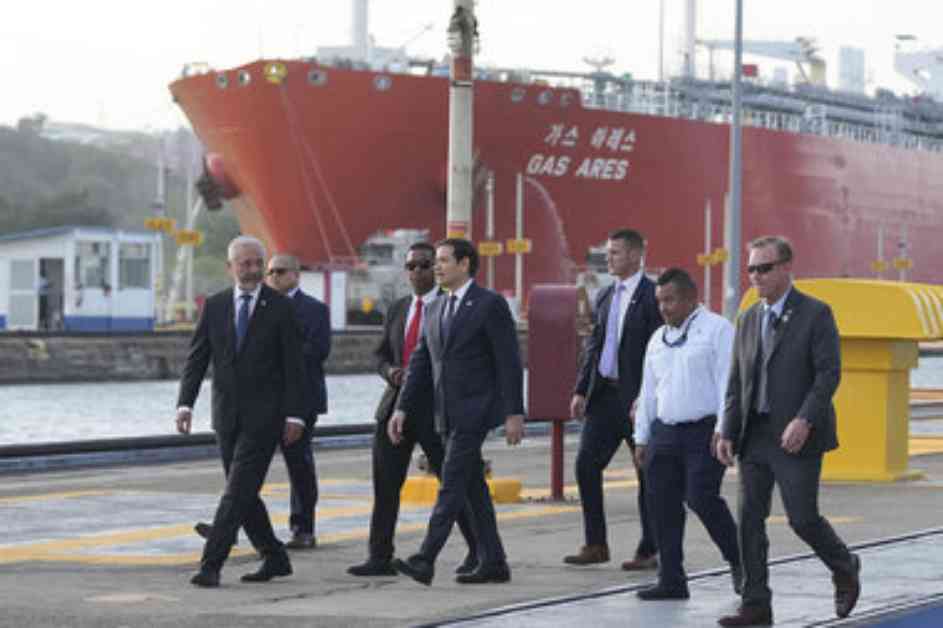President Donald Trump’s administration has expressed concerns about Chinese influence over the Panama Canal, a critical waterway connecting the Atlantic and Pacific oceans. The administration, led by Secretary of State Marco Rubio, views China as a significant adversary and aims to reduce its presence in the canal. This move has sparked debate over the canal’s ownership, operations, economic impact, and implications for U.S.-China relations.
Ownership and Operations of the Panama Canal
The Panama Canal, vital for global maritime trade, is owned and managed by the Panama Canal Authority, a Panamanian government entity. Historically, the United States controlled the canal from its completion in 1914 until it was transferred to Panama in 1999 under the Torrijos-Carter Treaties. These agreements allow the U.S. military to ensure the canal’s neutrality and grant perpetual American use.
Currently, Chinese companies like the Landbridge Group and CK Hutchison Holdings operate ports at both ends of the canal, while other ports are managed by American, Taiwanese, and Singaporean firms. Despite claims of Chinese control by President Trump, the operations remain diversified among various international entities.
The canal faces challenges such as severe droughts affecting water levels, necessitating toll increases to maintain operations. The toll rates, based on a universal formula, have raised concerns about U.S. shipping costs, prompting accusations of overcharging. However, Panama asserts that the tolls are applied fairly to all vessels, regardless of nationality.
Geopolitical Significance and U.S.-China Relations
Beyond its economic value, the Panama Canal holds geopolitical importance by linking major oceans and facilitating naval access. The U.S. administration’s push to assert control over the canal reflects broader concerns about Chinese influence in Latin America and global maritime routes.
Experts like Michael Beckley of the Foreign Policy Research Institute emphasize the strategic implications of U.S.-China competition in the canal region. Chinese presence in Panama and neighboring countries through investments and infrastructure projects raises questions about data security, military access, and regional influence.
The U.S.-China rivalry extends beyond the canal, with China expanding its economic footprint in Latin America. The construction of a megaport in Peru and the rise of supersize shipping vessels pose challenges and opportunities for the Panama Canal. As the U.S. seeks to counterbalance Chinese initiatives, tensions over control and access to critical waterways intensify.
Potential Outcomes and Diplomatic Strategies
Despite President Trump’s rhetoric on reclaiming the canal, experts like Douglas Paal and Robert Ross suggest that such statements may serve as symbolic gestures rather than practical policy shifts. The U.S. holds significant economic leverage over Panama, given its substantial share of canal traffic and bilateral investments.
Panama’s President José Raúl Mulino has affirmed the country’s sovereignty over the canal while signaling openness to reviewing agreements involving Chinese entities. The possibility of negotiating migration issues and trade terms underscores the complex interplay of diplomatic, economic, and security considerations.
While military intervention seems unlikely due to the absence of direct Chinese threats, the U.S. Navy’s presence in the region serves as a deterrent to potential disruptions. Dr. Ross points out that the U.S. military’s capabilities would prevent any serious challenge to American access to the canal.
As the U.S. navigates its global priorities, including conflicts in Ukraine and the Middle East, the focus on Panama may evolve based on shifting geopolitical dynamics. The delicate balance of power in the canal region underscores the broader implications of U.S.-China competition and the strategic imperatives shaping international relations.
In conclusion, the Panama Canal stands at the intersection of economic, geopolitical, and security interests, reflecting the complex interplay of global powers in the 21st century. The Trump administration’s efforts to address Chinese influence in the canal underscore the ongoing challenges of managing strategic waterways and balancing competing national interests in an interconnected world.

